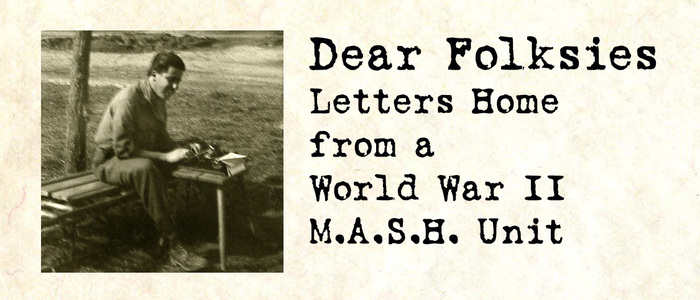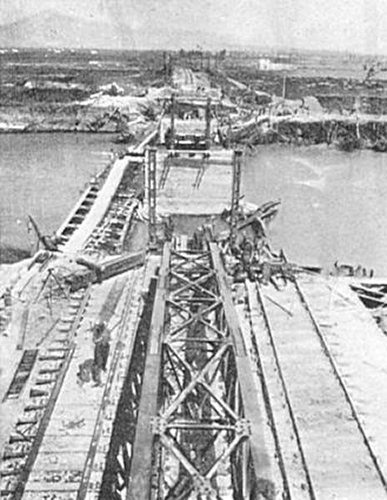May 29, 1944
We left Naples behind us and headed out into the country in a northerly direction. The countryside was quite beautiful at this time of year, all of the fields green and well cared for. It almost seemed as though we were riding through the Santa Clara Valley. Except for occasional groups of British and American troops bivouaced along the way and the destruction of bridges and small towns, there was little evidence of war; no wrecked tanks and guns such as we saw south of Catania, Sicily.
We crossed the now famous Volturno River where a railroad bridge was down. The small villages along the way showed evidence of a terrific shelling or bombing. Most of the buildings were a mass of plaster and shattered building-stone. Even a single building in a field, probably a former command post, would be hollowed or crumbled. Yet the civilians had returned and were doing their best to reconstruct their homes.
Activity along the road was at a peak, a continuous stream of trucks, guns and equipment heading for the front; everyone seemed to be on the move.
Along the way we were stopped for a few minutes by a traffic jam up ahead and found ourselves along side a few truck loads of German prisoners. I was impressed by their youth, most of them appearing to be in their teens. They seemed not unhappy and had none of the arrogance of the German prisoners we took care of back at Casablanca during the Tunisian campaign. I later verified this by a tough sergeant, an American casualty whom I talked to at the 616th holding hospital. There was also a truck load of civilian casualties, men, women and children, who were a pitiful looking lot. One man was holding the stump of his amputated leg with an expression of painful patience; another man lay in the bottom of the truck with an amputated arm and looked very bad. We were suddenly, in that short stop of a few minutes, brought very close to the reality of war once again.
.




